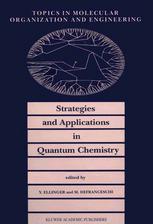

Most ebook files are in PDF format, so you can easily read them using various software such as Foxit Reader or directly on the Google Chrome browser.
Some ebook files are released by publishers in other formats such as .awz, .mobi, .epub, .fb2, etc. You may need to install specific software to read these formats on mobile/PC, such as Calibre.
Please read the tutorial at this link: https://ebookbell.com/faq
We offer FREE conversion to the popular formats you request; however, this may take some time. Therefore, right after payment, please email us, and we will try to provide the service as quickly as possible.
For some exceptional file formats or broken links (if any), please refrain from opening any disputes. Instead, email us first, and we will try to assist within a maximum of 6 hours.
EbookBell Team

0.0
0 reviewsAt the time when increasing numbers of chemists are being attracted by the fascination of supposedly easy computing and associated colourful imaging, this book appears as a counterpoint.
The first part focuses on fundamental concepts of quantum chemistry, covering MCSCF theory, perturbation treatments, basis set developments, density matrices, wave function instabilities to correlation effects, and momentum space theory.
The second part is devoted to more practical studies, ranging from the characterisation of exotic interstellar molecules, the accurate determination of spectroscopic constants, excited states structures and EPR parameters through photochemical and charge-transfer processes, cluster chemistry and fullerenes, muonium chemistry, to the possible prediction of the response of materials to electric fields in view of nonlinear optical applications.
Audience: Graduate students and researchers whose work involves quantum chemistry, molecular physics, and materials modelling.